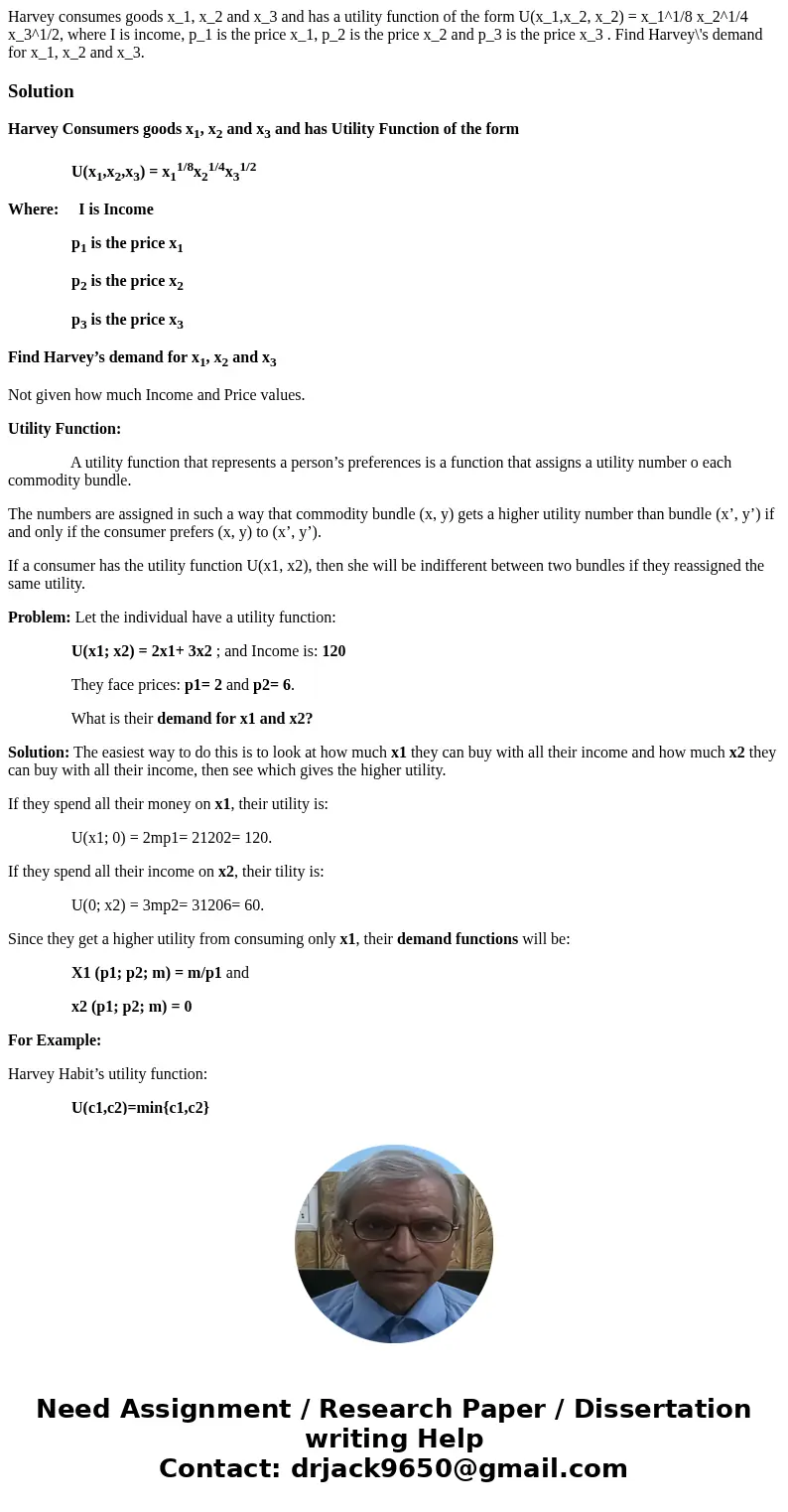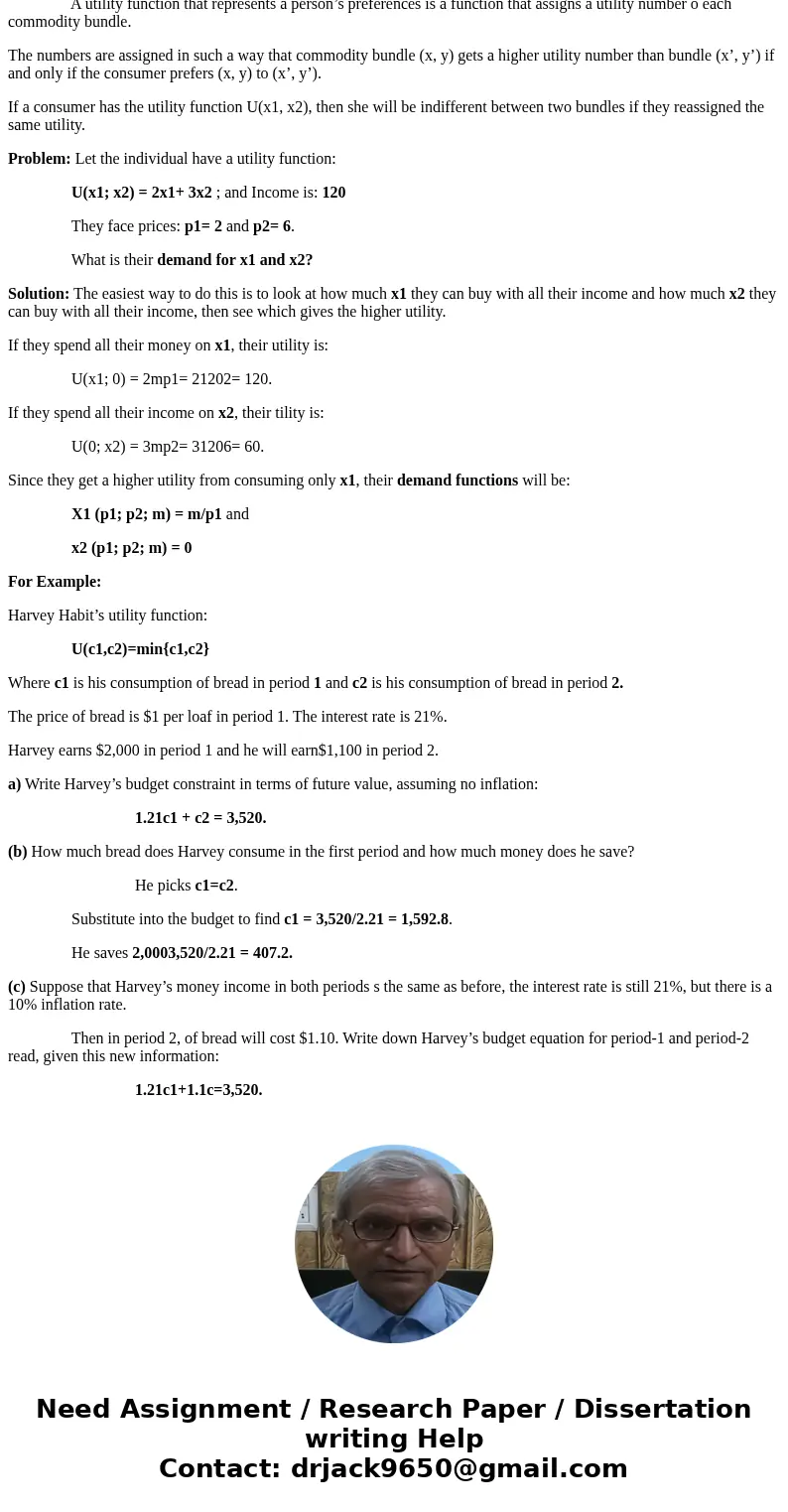Harvey consumes goods x1 x2 and x3 and has a utility functio
Solution
Harvey Consumers goods x1, x2 and x3 and has Utility Function of the form
U(x1,x2,x3) = x11/8x21/4x31/2
Where: I is Income
p1 is the price x1
p2 is the price x2
p3 is the price x3
Find Harvey’s demand for x1, x2 and x3
Not given how much Income and Price values.
Utility Function:
A utility function that represents a person’s preferences is a function that assigns a utility number o each commodity bundle.
The numbers are assigned in such a way that commodity bundle (x, y) gets a higher utility number than bundle (x’, y’) if and only if the consumer prefers (x, y) to (x’, y’).
If a consumer has the utility function U(x1, x2), then she will be indifferent between two bundles if they reassigned the same utility.
Problem: Let the individual have a utility function:
U(x1; x2) = 2x1+ 3x2 ; and Income is: 120
They face prices: p1= 2 and p2= 6.
What is their demand for x1 and x2?
Solution: The easiest way to do this is to look at how much x1 they can buy with all their income and how much x2 they can buy with all their income, then see which gives the higher utility.
If they spend all their money on x1, their utility is:
U(x1; 0) = 2mp1= 21202= 120.
If they spend all their income on x2, their tility is:
U(0; x2) = 3mp2= 31206= 60.
Since they get a higher utility from consuming only x1, their demand functions will be:
X1 (p1; p2; m) = m/p1 and
x2 (p1; p2; m) = 0
For Example:
Harvey Habit’s utility function:
U(c1,c2)=min{c1,c2}
Where c1 is his consumption of bread in period 1 and c2 is his consumption of bread in period 2.
The price of bread is $1 per loaf in period 1. The interest rate is 21%.
Harvey earns $2,000 in period 1 and he will earn$1,100 in period 2.
a) Write Harvey’s budget constraint in terms of future value, assuming no inflation:
1.21c1 + c2 = 3,520.
(b) How much bread does Harvey consume in the first period and how much money does he save?
He picks c1=c2.
Substitute into the budget to find c1 = 3,520/2.21 = 1,592.8.
He saves 2,0003,520/2.21 = 407.2.
(c) Suppose that Harvey’s money income in both periods s the same as before, the interest rate is still 21%, but there is a 10% inflation rate.
Then in period 2, of bread will cost $1.10. Write down Harvey’s budget equation for period-1 and period-2 read, given this new information:
1.21c1+1.1c=3,520.


 Homework Sourse
Homework Sourse